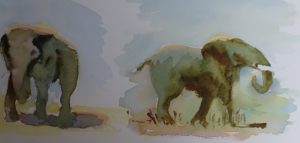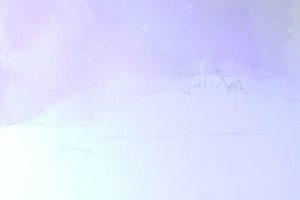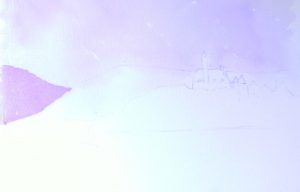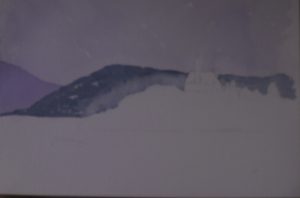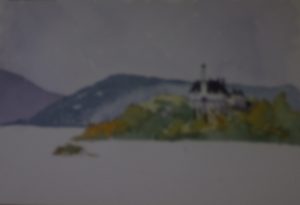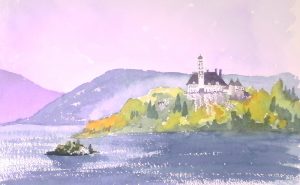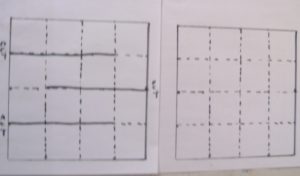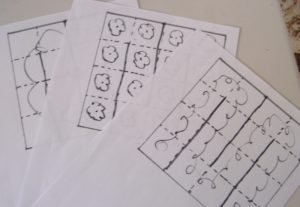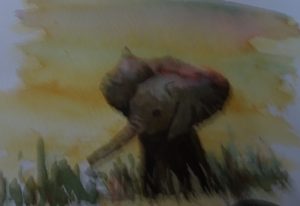 Isn’t he a dear! His ears are so big that I think he must be an African elephant, though babies do have big appendages. But even he won’t do for my Meander book pockets.
Isn’t he a dear! His ears are so big that I think he must be an African elephant, though babies do have big appendages. But even he won’t do for my Meander book pockets.
Years ago we acquired a regal red-glazed elephant who was immediately named The Elephant Of Distinction (I like Kipling’s Capitals). He graced our room for some years in splendid isolation, and was then joined by one entirely other. This elephant was bronze-glazed, caparisoned, schematic, dumpy, and was just as immediately dubbed The Elephant Of No Distinction But Infinite Charm. My daughter has used this image for two embroideries,
http://www.blog.virtuosewadventures.co.uk/wordpress/elephant doorstop
and I thought he would be ideal for the effect I was seeking. Here is a line drawing.
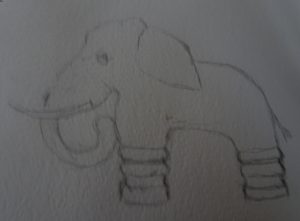 My intention is to make a lino print, excavating TEONDBIF but printing the background in various colours, then dressing him by hand. Simple, colourful, satisfyingly repetitive but varied at the same time.
My intention is to make a lino print, excavating TEONDBIF but printing the background in various colours, then dressing him by hand. Simple, colourful, satisfyingly repetitive but varied at the same time.

